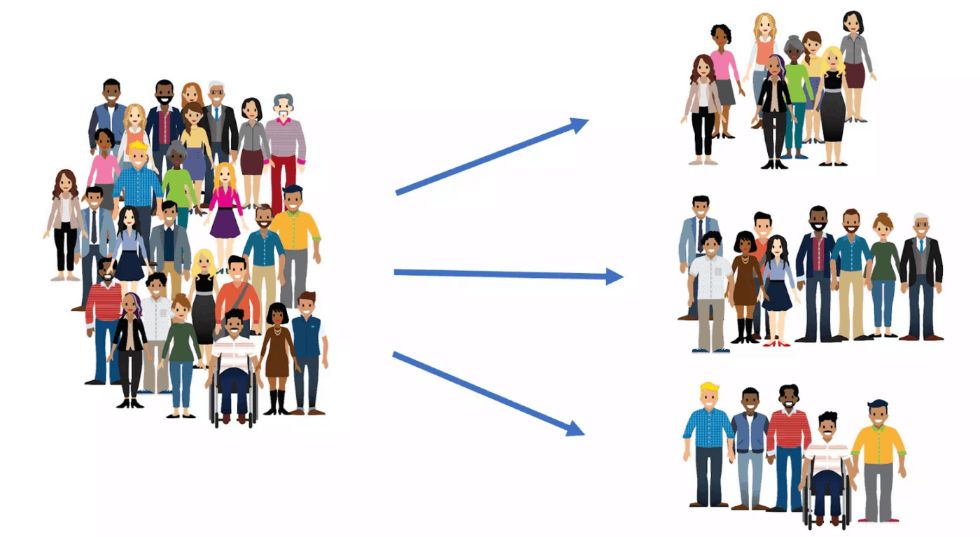Let's face it. You've got a mind-blowing idea. You built great strategies, showed commitment, and went the extra mile to convert your business dream into reality. Finally, you've developed something that has all the commandments of a world-class product. Now, your content marketing team is giving their best to effectively promote this new product.
To your shock, your content isn't producing the results you want.
It's not only extraordinary writing skills that matter to create a powerful content strategy. You must listen to and empathize with your audience to drive your marketing.
There is a quote, "The better you listen, the luckier you get". It's very true, in fact, when it comes to content strategy.
In today's technologically-advanced and highly-competitive marketplace, offering customers a relevant, tailored experience has become more critical than ever for brands and businesses. Customers today are more likely to associate with brands and products that listen to them, understand them, and provide personalized services to meet their ever-evolving needs, tastes, and preferences.
When you improve your listening skills, you get a deeper understanding of other people from their viewpoints. You have a more in-depth understanding of their desires.
This article is intended to teach you how to listen effectively and empathically to your audience to plan the compelling content tailored to their specific requirements.
Planning your content requires an understanding of your audience. Understanding your audience entails paying attention to them.
Before creating an editorial calendar or even writing a single page, it's critical to identify your target audience. Only then can you create content that demonstrates your comprehension of them.
To include this listening approach into your content strategy and execution, follow these steps:
Listen to Your Customers
It's impossible to listen if you're simply expressing your own thoughts. As a result, you must stay quiet until the consumer has completed describing their issue. Even if they already know the answer, interrupting them will make your team seem rushed.
Once the customer has finished speaking, you never know what new information they could have that might change the case's outcome. So it’s vital to properly listen to your audience. Listening to your customers will reveal trends that may inform your future content creation.
Use Listening Tools
As a content creator or digital marketer, you must be an empathic listener, but how do you accomplish that in a world where you can't meet all your audience personally?
This is where listening tools come into play.
There are many strategies for empathically listening to your prospective readers to tailor your content to them.
Social Media Listening
When a brand's social media channels are being monitored for any customer feedback or direct mentions of their brand or discussions about specific keywords, topics, competitors, or industries, it is known as "social listening." This monitoring and analysis are then used to gain insights and take action on those opportunities.
A company's customer experience may be improved by communicating directly with its consumers and regularly shifting its customer strategy to meet the current requirement. This can all be accomplished via the practice of social listening.
By performing social listening, you may develop the kind of content that your followers (who are your readers/customers in most cases) desire, generate new ideas based on industry trends, enhance your customer experience via direct interaction with consumers, and continually adjust your customer strategy to meet current needs.
Surveys
Surveys are excellent instruments for listening. You may create a survey to ask the questions you'd want your target market to answer, but you should also allow for comments and feedback. The objective is to engage in sympathetic listening with your prospects or clients.
- What are your challenges, and how can our product or service help you solve them?
- What types of content do you like the most? What are your primary goals?
- What is most important to you?
- What do you like most/least about the product/service?
- What made you choose us over a competitor?
The answers to these questions will help you gather a lot of valuable information about your target audience and eventually customize the content for them.
Ask Loyal Customers
Loyal consumers are an excellent source of information about your target market. To understand more about your clients, conduct surveys, send emails, or pick up the phone and make calls.
Take note of their aspirations or needs, as well as their anxieties or fears. What are they interested in learning more about, and how can your firm assist them in improving their lives? Gain an in-depth grasp of your audience's emotional state and a real comprehension of what is in their thoughts.
Make Use of What You've Learned
It would be best if you had a good idea of what your target audience wants or values after listening to them. Start developing your content strategy by analyzing that information.
You should be prepared to answer queries such as, "What is your audience looking for?" "What are they expecting?" "What can you do for them?" what are you attempting to achieve with your content?"
The first step in creating a content strategy is identifying your target audience. After that, you must decide on your business objectives and how you will create and distribute your content.
You must share your most popular, engaged and liked content and focus on promoting content they want to see.
Conclusion
Companies can't give their customers what they want if they don't know them. Listening to your target audience enables writers to gain insights into their intent and needs to provide them tailor experiences.
Effective content planning isn't only about what the organization wants to say but also what the audience wants to hear.
Listening to your audience is the best way to learn what they want to hear. Emotional listening may aid in creating content that attracts and retains readers and converts them into consumers.


